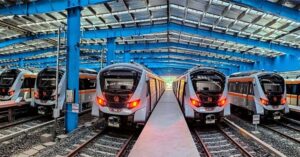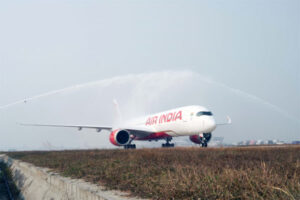- Infrastructure has been a key area of focus for the government and Union Finance Minister Nirmala Sitharaman has maintained the momentum in the Interim Budget
- Two experts – an author and an academician – share their view points for the discerning readers of Navjeevan Express
- During her interim Budget speech on Thursday, February 1, Union Finance Minister Nirmala Sitharaman stated that the projected infrastructure spending for the fiscal year 2024-25 is set at 3.4% of the GDP

This year’s union interim budget aims to achieve harmony with nature, modern infrastructure, and opportunities for all. By statistics there is a doubling of FDI inflow during the period between 2014 and 2023. In addition to it significant improvement seen in the physical infrastructures since 2015 namely national highways, cargo and supply chain infrastructures, electrification of railways, and quality of airports. There is an increment seen in the capital expenditure allocation for the infrastructure and investment development (₹11.11 lakhs crores approx.).
A good step for long-term development

During her interim Budget speech on Thursday, February 1, Union Finance Minister Nirmala Sitharaman stated that the projected infrastructure spending for the fiscal year 2024-25 is set at 3.4% of the GDP. The infrastructure sector in India had anticipated the government to reveal a comprehensive long-term plan and timeline for the enhancement of the country’s infrastructure as part of the Interim Budget. Improvement in the overall infrastructure would strengthen the E-Vehicle ecosystem and promote sustainable development. Keeping all of these in mind, it is seeming to be a good step for long-term development.
Railways steaming ahead on right track
To boost the Indian railways infrastructure three major economic rail corridor programs identified under Prime Minister Gati Shakti will be implemented to improve logistics efficiency and reduce costs. It would be beneficial for catering the huge Indian populations in a most efficient mode. In addition, to facilitate the urban transportation expansion of the Metro and NaMo Bharat across the major cities is announced in the budget. Indian railways are the lifeline for both the urban and rural inhabitants across the country. Further development of the railway corridors would have a direct and long-term effect.

UDAN gets wings of fire
Similarly, the Indian aviation sector realized significant development across the Indian states. Construction of new airports, expansion and renovation of prevailing airports is covered under the UDAN (Ude Desh ka Aam Naagrik) scheme. The present union budget allocates ₹502 crores to UDAN for regional connectivity that is lesser than the previous year distributions. Over the years the Indian aviation sector has seen an upsurge in the traffic both in terms of airplanes, and passengers. That indicates a huge demand for it, and on the other hand it is crucial to meet the supply side. To support the supply side, more investments are required for overall development in the coming years.

Land acquisition and labor laws are Herculean tasks
As stated by the finance minister the forthcoming reforms will be conducted in collaboration with state governments. Although the government has streamlined India’s intricate tax systems and invested in new ports and roads, it has encountered challenges in liberalizing land acquisition and labor laws.
The authors of this article Moinak Maiti is an author, business advisor, and independent researcher while Pravin Jadhav is an associate professor and coordinator at IITRAM












